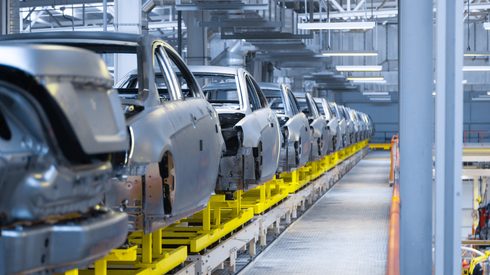Marcos Camhis, chief executive officer of FOS Asset Management commented on the potential supply crunch at the Mines and Money conference in London on Tuesday April 25.
FOS is a Switzerland-based investment company with a focus on mining investments.
“I think the growth of the market, if we look at its scale, means we do need all the materials we can get,” Camhis said during a panel, clarifying that “the growth of the [global] market and the new different types of electric vehicle [EV] mean that demand has not really changed despite the growth of new technology.”
The same view was shared by other industry attendees at the event.
“All the developments in the EV revolution are mind-blowing,” one industry participant active in a number of BRM markets said.
“We receive two to three pitch-decks on BRM chemistry every week… The battery chemistries in the coming years are very hard to predict,” the participant added.
The participant was confident that irrespective of developments in battery chemistries for mobility and energy storage applications, the full spectrum of battery raw materials, in different quantities, will still be required.
Cobalt, lithium and nickel are typically deemed key battery raw materials needed for the energy transition evolution but conference delegates highlighted the strategic importance of other elements, such as manganese and rare earths.
Rare earth magnets are vital for both the EV sector and for renewable energy generation, where they are used in wind turbines.
Further development needed to overcome technological hurdles
On the sidelines of the event, a second participant told Fastmarkets that further developments are required in the sector to overcome technological challenges.
“I think the rare earth elements sector requires more technical understanding,” the second participant said.
While abundant, processing rare earths requires significant capital investment, the delegate added. As such, there is uncertainty whether major producing projects – that could help close the supply gap – will come online, they said.
Discussing the prospects for manganese sulfate and its role in rechargeable batteries, a third attendee told Fastmarkets that refining battery-quality manganese sulfate poses its own challenges, despite the relative abundance of manganese.
Fastmarkets’ assessed the price of manganese sulfate 32% Mn min, battery grade, exw mainland China at 5,500-6,000 yuan ($797-870) per tonne on April 20, compared with 6,200-6,500 yuan per tonne at the start of the year.
Chief marketing officer at South Africa-based manganese producer Manganese Metal Company Madelein Todd emphasized the relative scarcity of battery-grade manganese in an interview with Fastmarkets previously.
“There is a gap between manganese ore and high-purity manganese products; that gap is very big and presently a very small quantity of the total supply of manganese is of the purity required for battery material,” she said.
Want more insights and forecasts for the battery materials market?
Keep up to date with global market insights and predictions for 2023 and beyond. Gain access to more data and analysis by requesting a demo of one of our short-term forecasts.






